The exhibition of works by eight recipients of The Master of Fine Arts program, at Western Connecticut State University, promises a broad selection of media and artistic talent, at Blue Mountain Gallery, New York City.
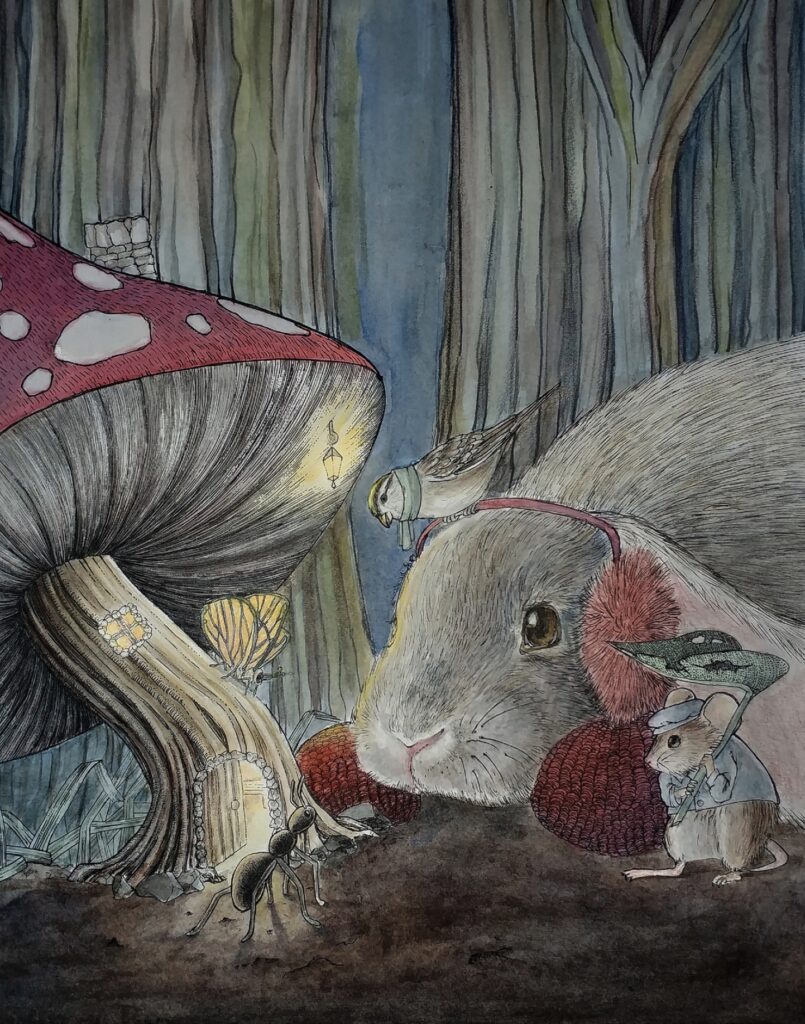
Andréa Rios
When viewing Andréa Rios’ work, we are sent back into our childhood. Rios demonstrates that she too, lives in the magical space of the imagination —of large against small. A place of whimsy where animals with personalities tell their stories. Rios creates a fabled world in soft, analogous colors. Her image of a frog, encircled by a colorful blanket, asks us: Is the frog safe, frightened, or looking for a lily pad to land on? Rios’ style is done in a delicate, careful manner; rendered in watercolor, ink, and black line, her illustrations take us to an enchanted place. She knows that we humans need story telling to keep us connected. In her piece, titled, “The Mushroom In The Rain,” we’re captivated by a rabbit, a bird, a mouse coming to visit a mushroom home with a chef’s hat roof. Andréa Rios welcomes us into her art, suspending us, bewitching us with the beauty she creates from a child’s heart.
Dee Rose Barba takes us to the other spectrum of art; to abstraction and mystery in her piece titled, “Faded.” This work stands out by the skill of how she uses light and dark in the medium of oil paint on wood. In the lower center of the work is a touch of golden yellow surrounded by rugged looking wood texture, in contrast to the smooth, darker edges in a nickel-colored gray. This piece is redolent of time passing, aging, which the title suggests.
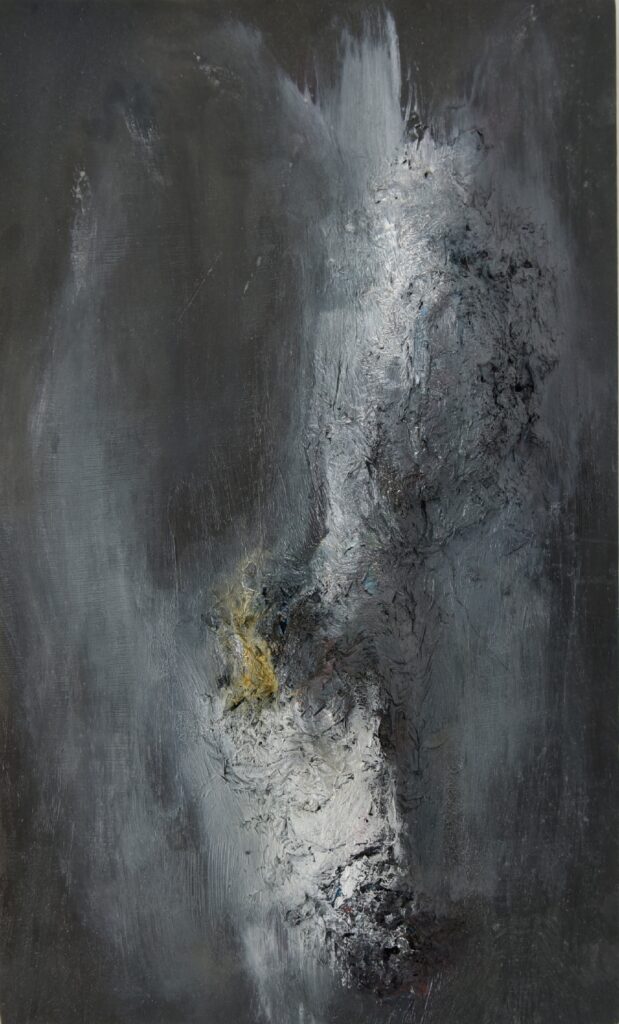
Dee Rose Barba
It reminds one of memories; how some are clear and pronounced while others are faded in the dark borders of the mind. Dee Rose Barba also works in painted clay figures in her piece titled, “Jujah Mass.” Her figures hint at bodies reaching out, seeking a way to be set free —as if wanting to be released from the weight of their base and from the anchor of gravity. These shapes are intriguing both in their movement and solidity.
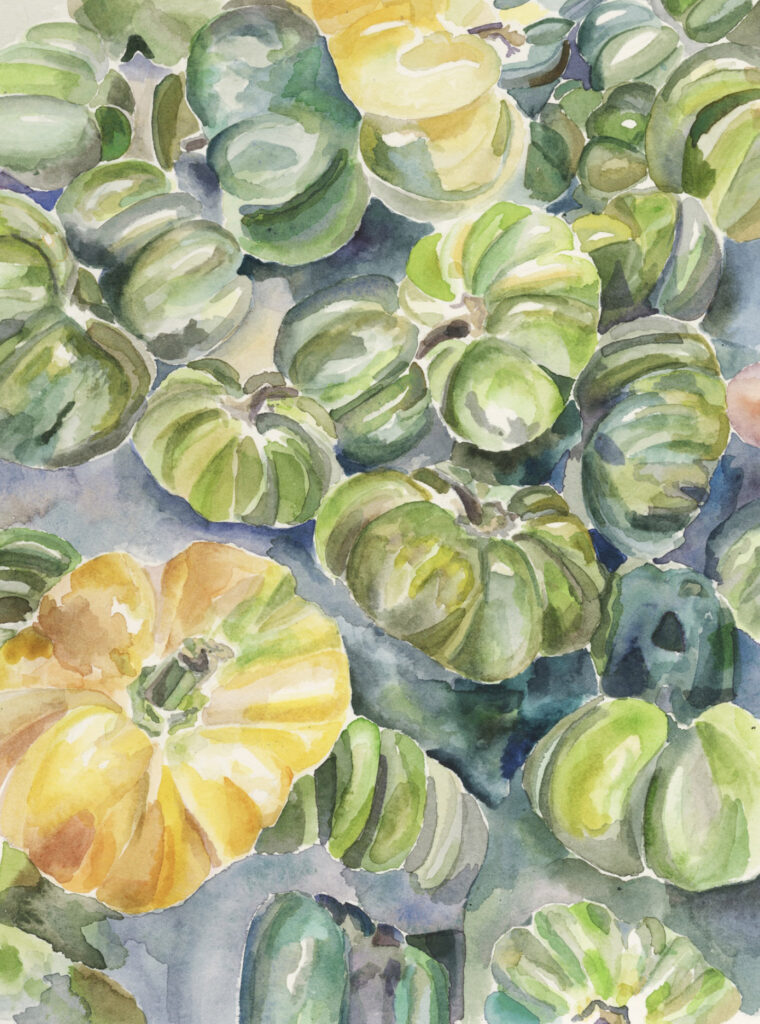
Brett M. Colon
Brett M. Colon is a storyteller of a different kind using watercolor on paper in a classic style. She uses realistic subject matter with a loose painterly approach, which animates the work in an engaging way. An untitled piece features a gray background with green and gold gourds falling on the picture plane. The gourds have broad hips, rounded bellies, giving them an anatomical human quality. This piece celebrates spherical shapes, a kind of free-for-all, free fall of a simple object from a harvested bounty. There’s an intimacy to Colon’s other piece, of coffee cups, with cookies on the side. There are two cups and saucers and two plates that place the composition in a square at the center of the paper, surrounded by a large block of white on all sides. The implied intimacy is the way the crockery is gathered in a group; Brett M. Colon and a friend having a warm drink, and what remains — that tundra of surrounding white— could simply be a tablecloth or perhaps the calm relief that negative space offers. The same way space offers silence in a poem.
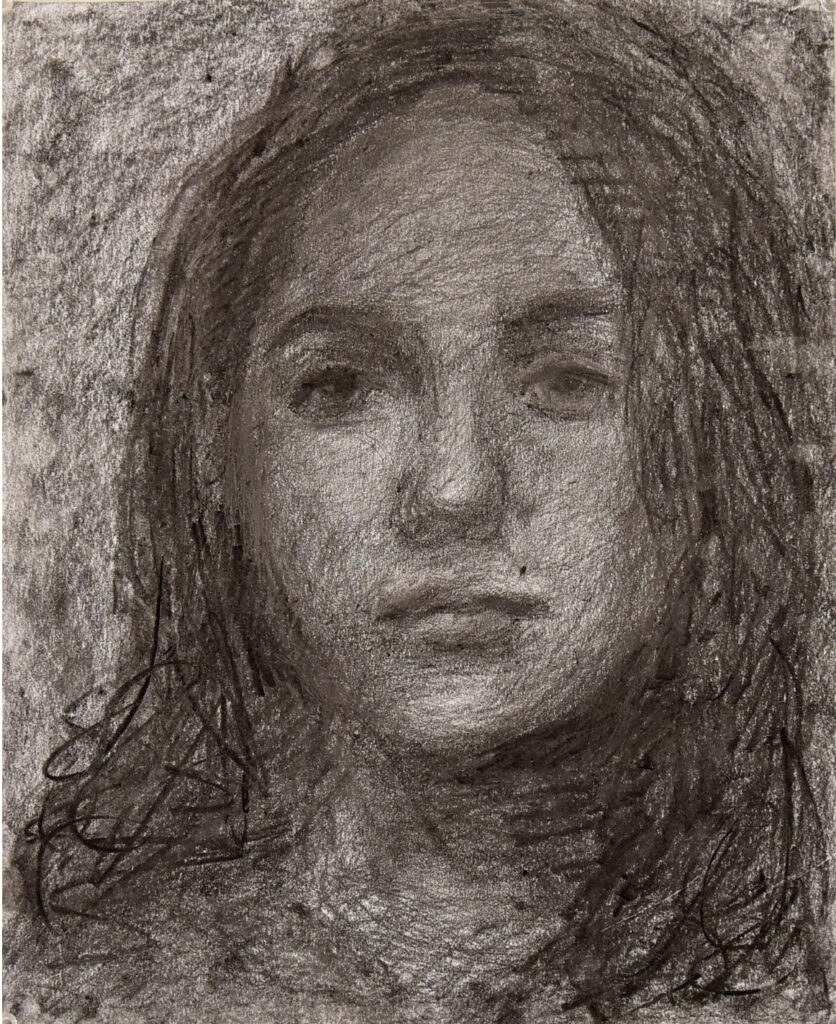
Mildred Paulino
Mildred Paulino’s art grabs the heart. She has the innate ability to capture emotion with portraiture which is no easy task. Her piece titled, “Flash Bios,” done in graphite on paper, lures the viewer to the inner being of the face she created. Paulino skillfully uses a softer line on the face and a heavier line on the hair. One senses an old soul lives behind that face. Paulino claims, in her artist statement, to create a strong presence, a story being told, a life lived. She achieves this. One wants to know more about the person she is rendering, what joy, suffering and longing they’ve known. In her second portrait titled, “Self Loyalty,” a wonderful title that intrigues, she uses the medium of oil on a plexiglass panel. By changing the medium Paulino uses thicker paint and a palette knife that creates a bolder, emotional impact —as if the marks from the palette knife, the density of the paint are an embodiment of some inner scars of the person being painted. Mildred Paulino is a gifted artist and one hopes she will continue to make her mark and tell her story through art.
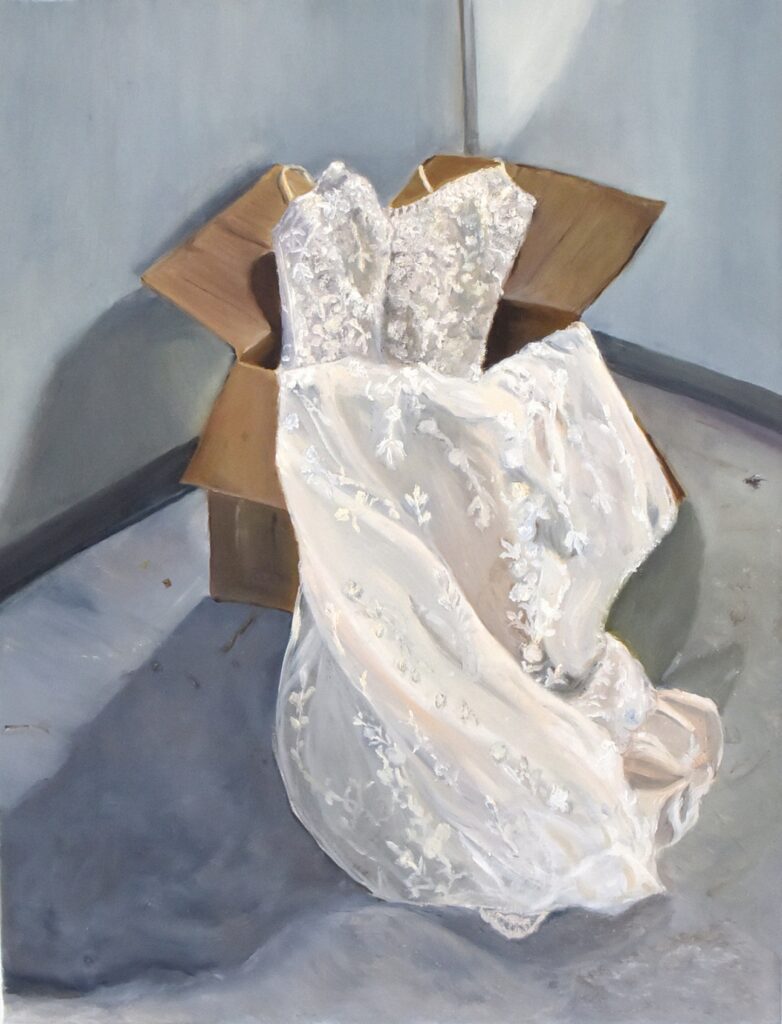
Dee Dee Perrone’s oil on canvas in the piece titled, “In Or Out,” is poetry and mystery at its best. It’s a painting of what looks like a lacy wedding dress sitting in a box that might’ve been stored in the attic. This image insinuates a back story. One asks, was this worn at a wedding? Or was the wedding called off? Was the dress packed up, forgotten along with the other losses of the would-be bride? The detail and paint strokes of the dress suggests delicacy, pitted against the dull, brown box, calling to mind that life offers us both beauty and joy that sometimes converges with bereavement and undoing. This art work is evocative in its lyrical presentation. Perrone’s second piece is a visual second chapter to the first image of the dress flowing out of the box. In her second piece titled, “Stifled,” a woman is bent over wearing that same dress; her face is hidden, her hair cascades over her body. All we see is her arm carefully painted, delineating her skin tone; incandescent, expressing a womanly radiance buried in sorrow. Dee Dee Perrone’s work is striking, vivid, eloquent. One hopes to see more of her poignant paintings.
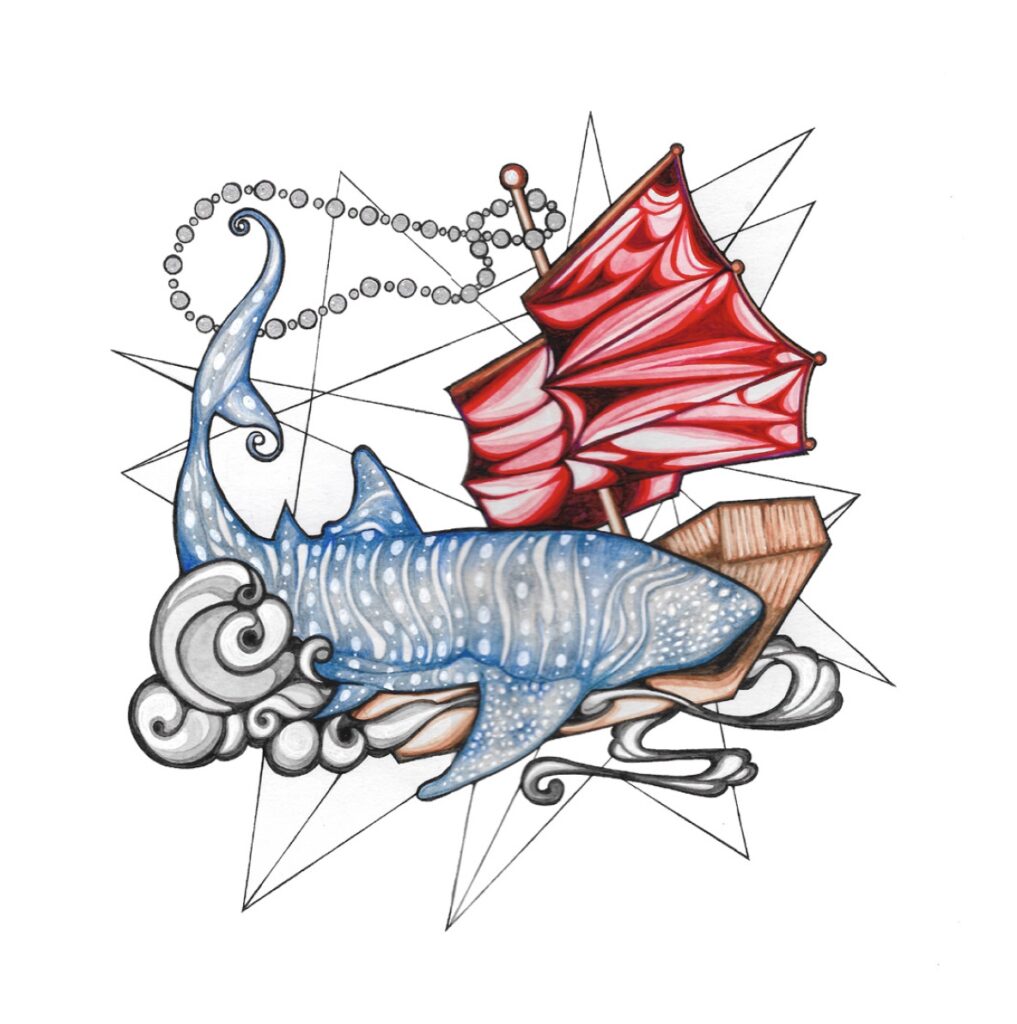
Rima Rahal
Rima Rahal’s art is a new language she creates with a personal set of ciphers to illustrate her experiences as a worldwide traveler and teacher. They’re featured in this show about the Philippines, Hong Kong, Macao, Lebanon, China, and Vietnam. Also, two more eastern European countries and the Middle East. Each symbol is skillfully done meshing multiple images by their meaning. This art is beautifully rendered binding together each piece with fractured triangles in the background to help the illustration flow from one to the next. One is reminded of logos, in this case personal ones, becoming totems and hallmarks of her experience in each country. Rima Rahal demonstrates through her work a unique approach in the way she communicates.
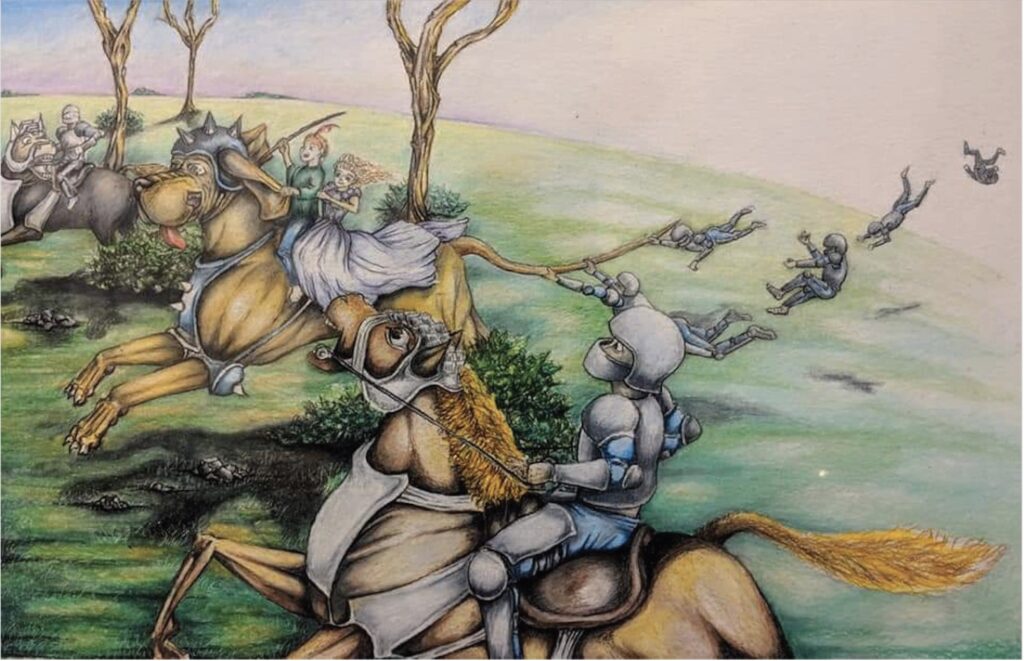
Brian Ferreira
Brian Ferreira casts a spell with his marvelous illustrations in colored pencils. He transports us to stories and characters, both child and adult would be enthralled by. In the piece titled, “Rescue The Princess,” we see castle guards coming to retrieve the princess. She and a young boy are riding on a magnificent looking dog with steel armor. One is surprised by how the great dog could be mistaken for a horse. Clinging to the tail of the great dog are a few soldiers that will soon fall behind. The viewer cheers on the princess and the boy, hoping they’ll outrun the castle guards and find themselves in a new, enchanted land. The piece titled, “Time For Bed,” is of a boy in bed, accompanied by his sleeping hound dog. The boy must be dreaming about rescuing the princess, and the dog must be dreaming about wearing armor and being fleet of paw (hoof) like the horses. Ferreira’s illustrations are done in a detailed process with the soft shading that
pencils allow. There’s skill in his story telling, while working with a medium that requires patience. Brian Ferraira mesmerizes us with his imagination, his remarkable use of shading that implies an underlying darkness in his magical stories.
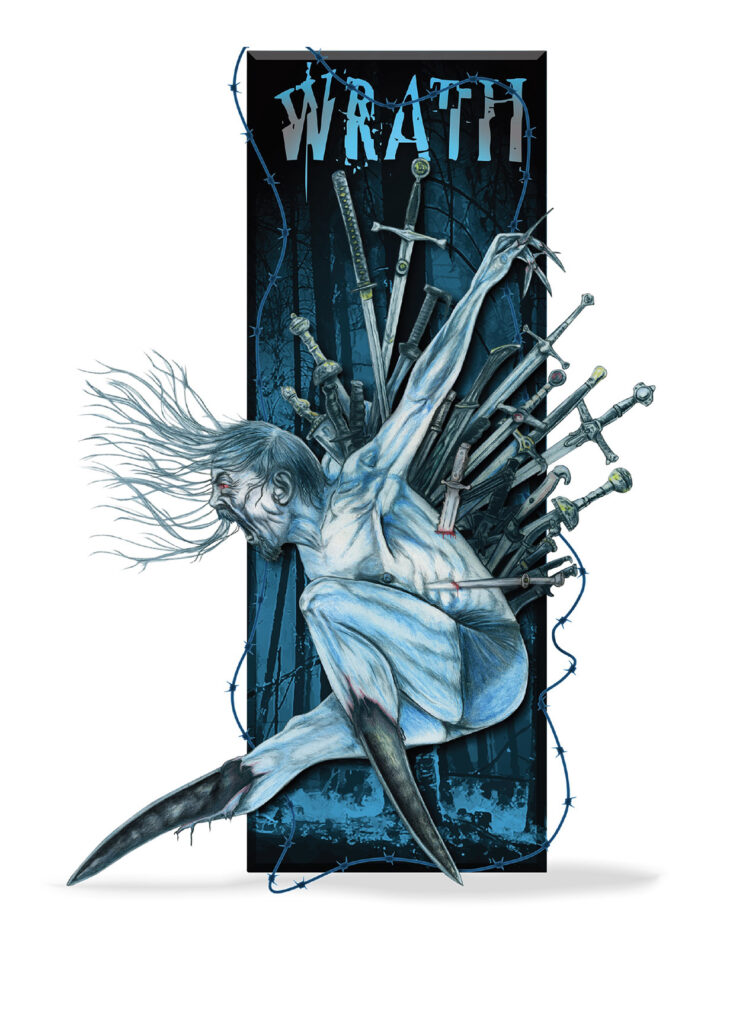
Greg Mursko
Greg Mursko surprises with his daring and thoughtful art. The piece titled, “Wrath,” from his seven deadly sins series, convinces us to be aware of our anger. In this piece we see a man portrayed in excruciating pain, with dozens of swords impaling him, while the wrathful being is screaming with rage. The man’s feet are pointed and shaped like talons, implying that he too who cuts, shall be cut. The images are done in shades of cerulean blue and black displaying how much color can express emotion. The entire image is surrounded by a winding barbed wire border. One can feel the physicality of this powerful piece. Musko’s other work titled, Alfred Hitchcock, is done in ceramic tile and colored pencils and is a beautiful piece of drawing. One is reminded of the jaunty theme song of Hitchcock’s old TV show. A giant bird sits on top of his head, with hundreds of birds in the background on telephone wires, alluding to the haunting and peculiar movie, The Birds. A movie that is compelling and frightening. On the left side, Mursko mimics the picture of the right side (the highly rendered and well done version) in a nuanced, shadowy tile. Were the birds warning us about being respectful of nature? Of loving the earth? Did the birds and Hitchcock’s eccentricities have other messages they were trying to convey? Greg Mursko poses these possibilities.
WCSU MFA Thesis Exhibition 2019
Blue Mountain Gallery
530 W. 25th St., 4th Fl., New York, NY
Opening Reception: Thurs, June 20, 5-8 pm
June 18-July 6, Tues-Sat 11am-6pm

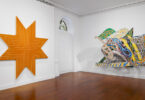
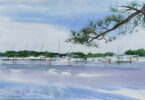
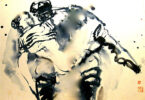
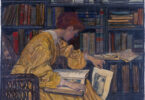
Leave a Comment